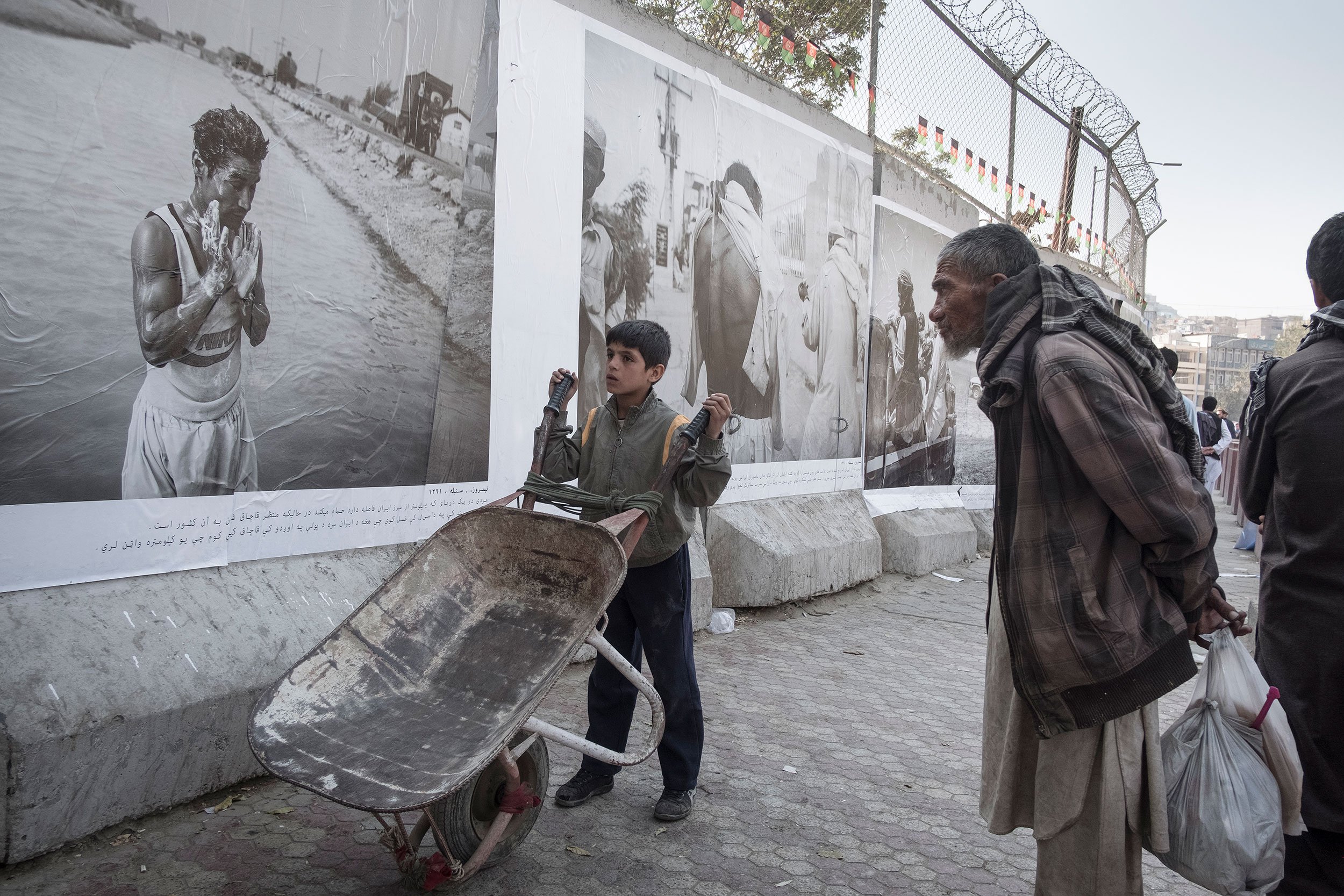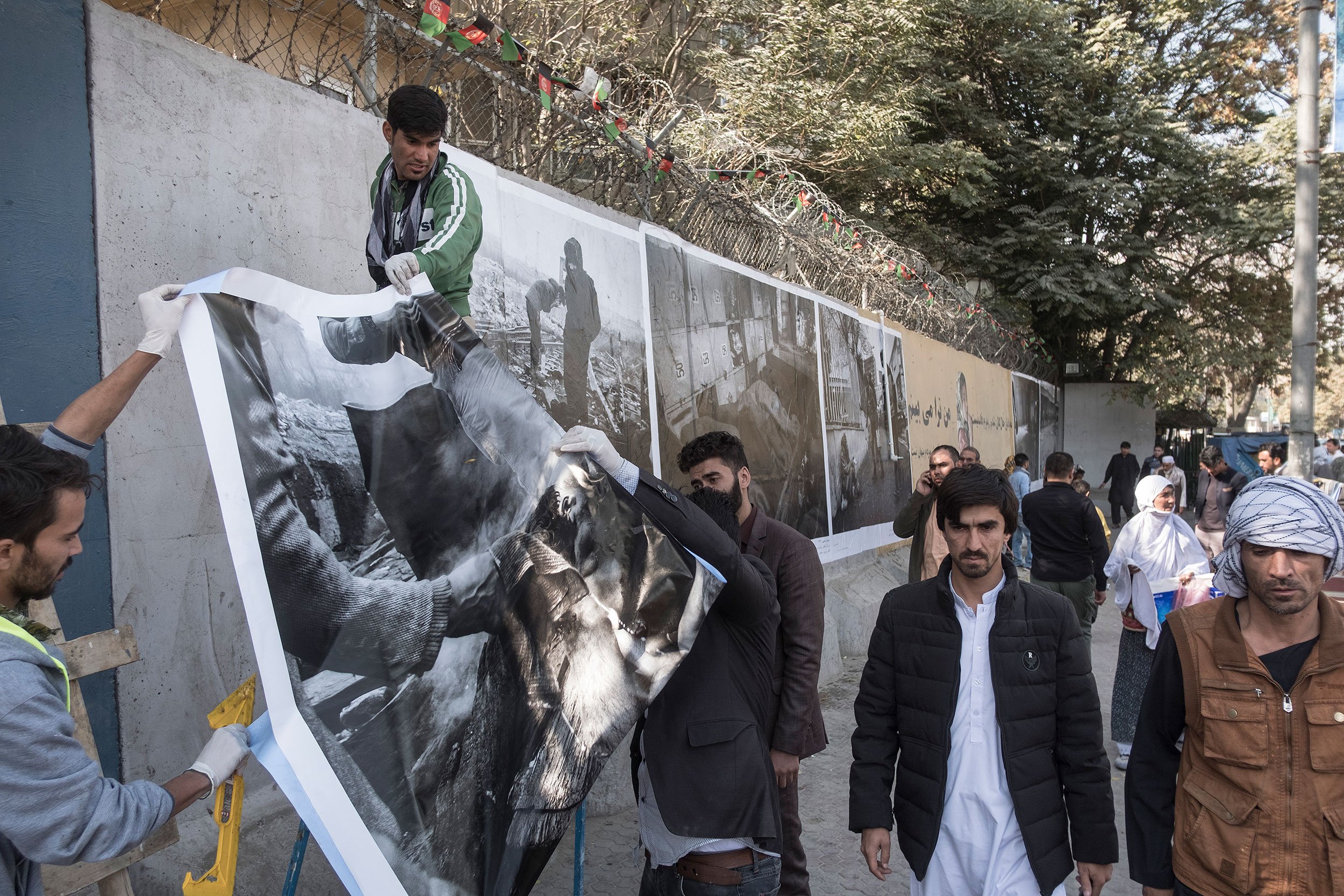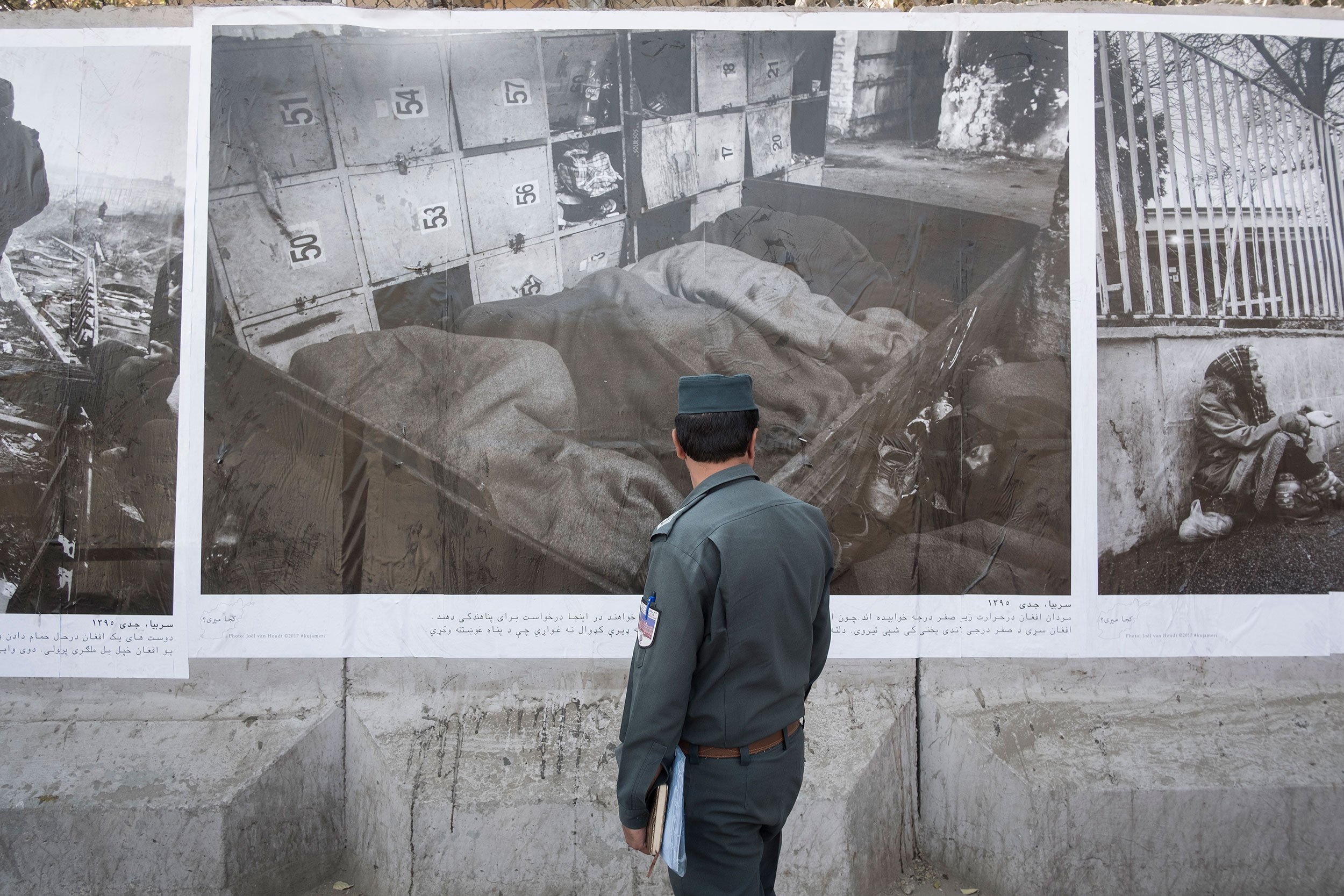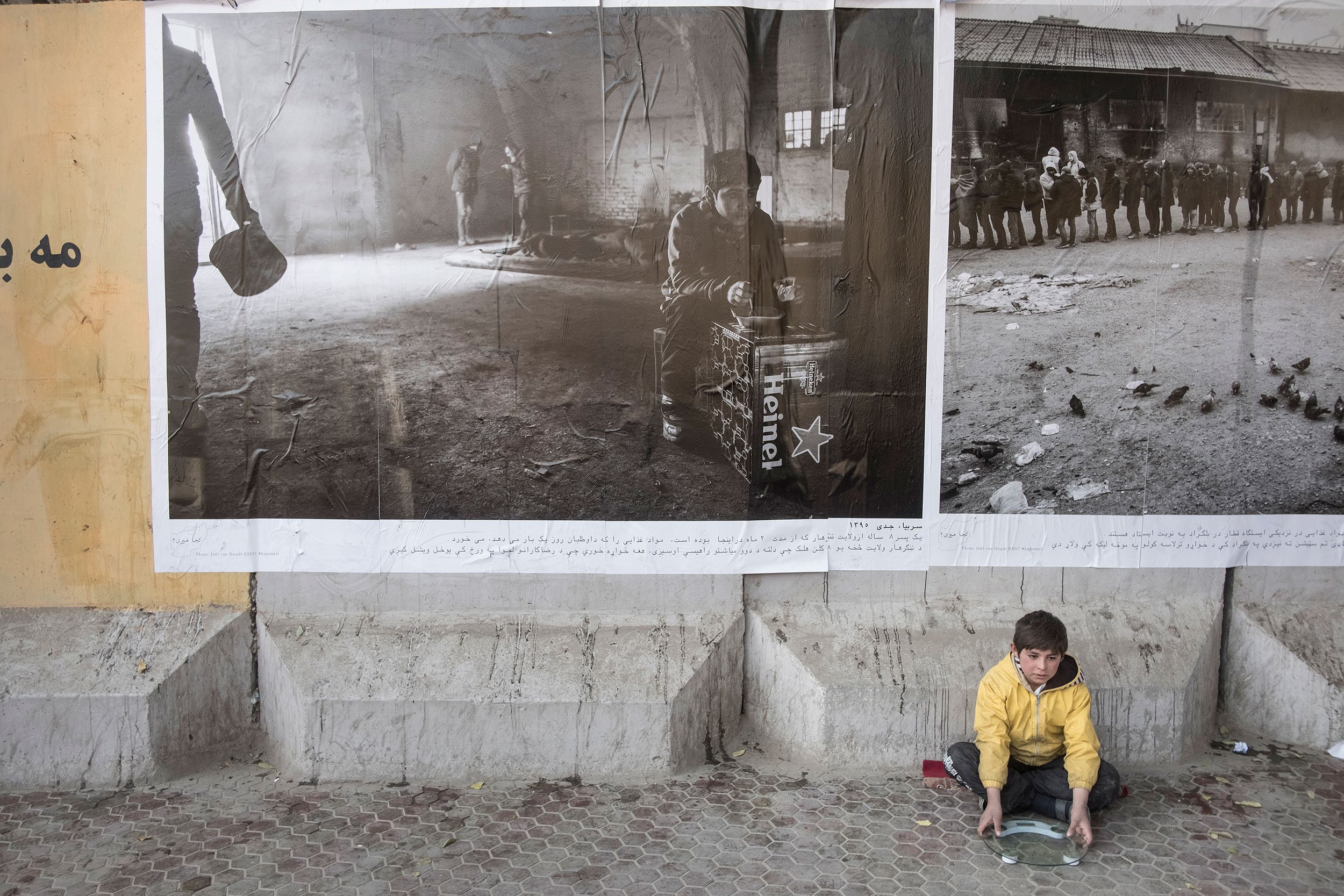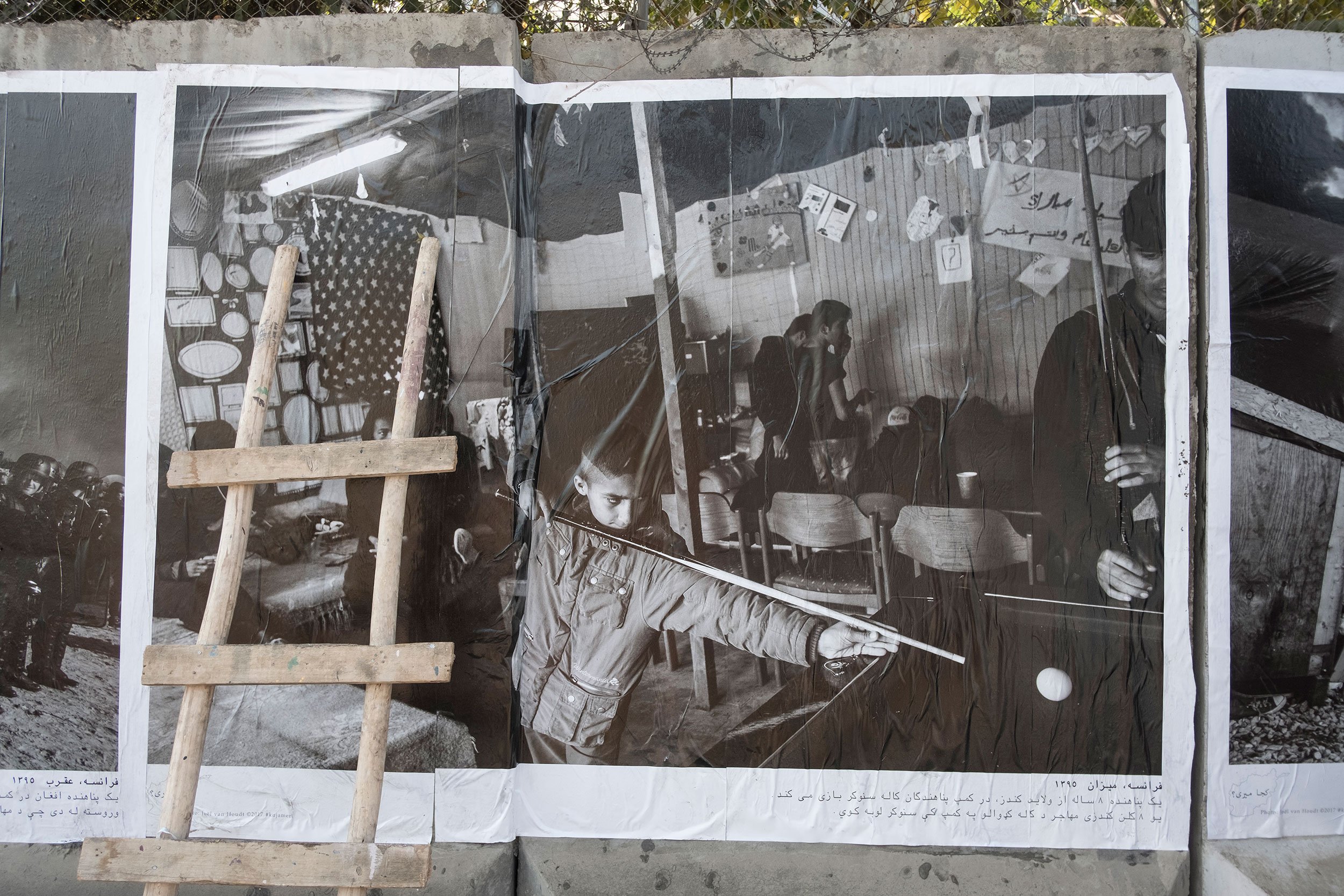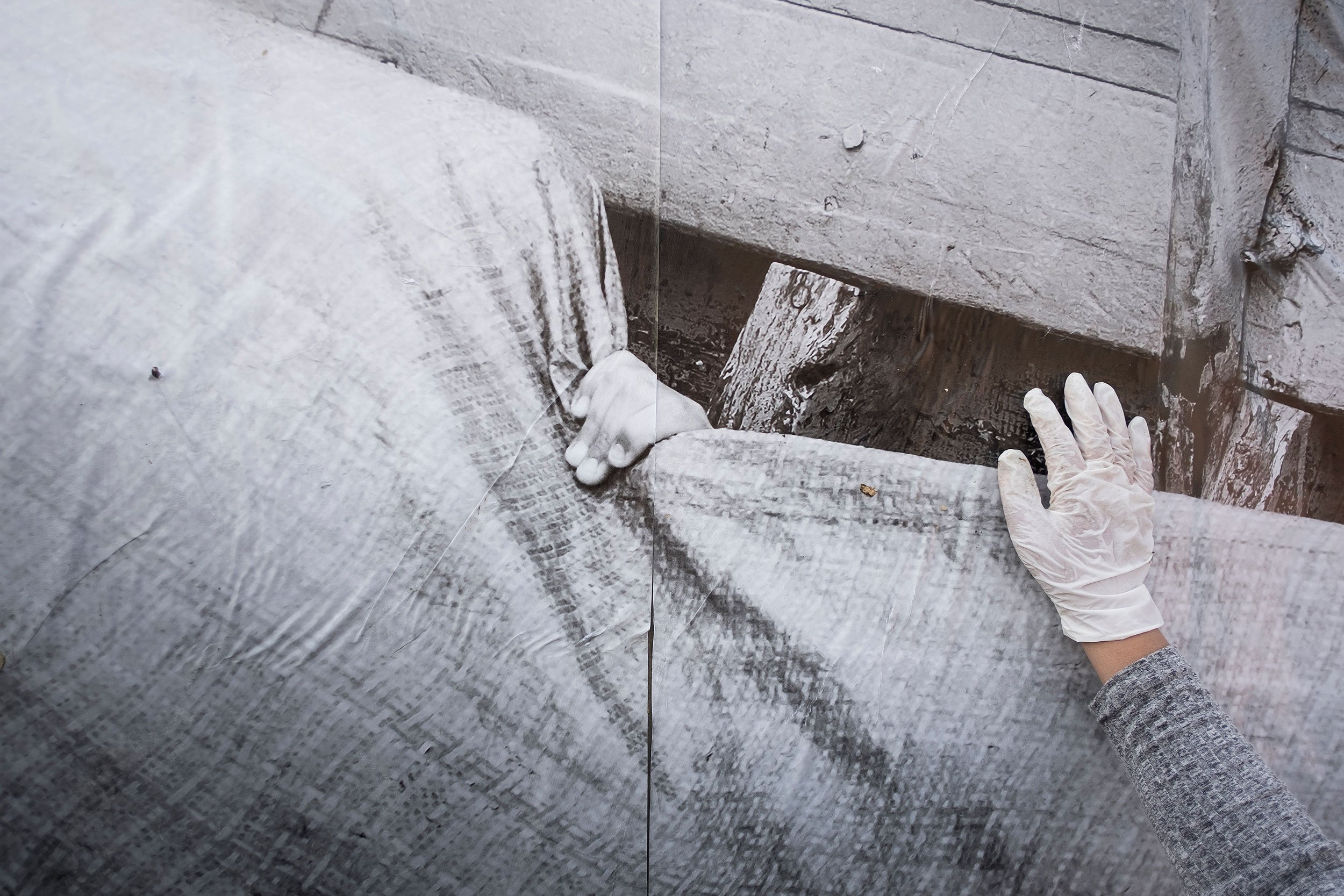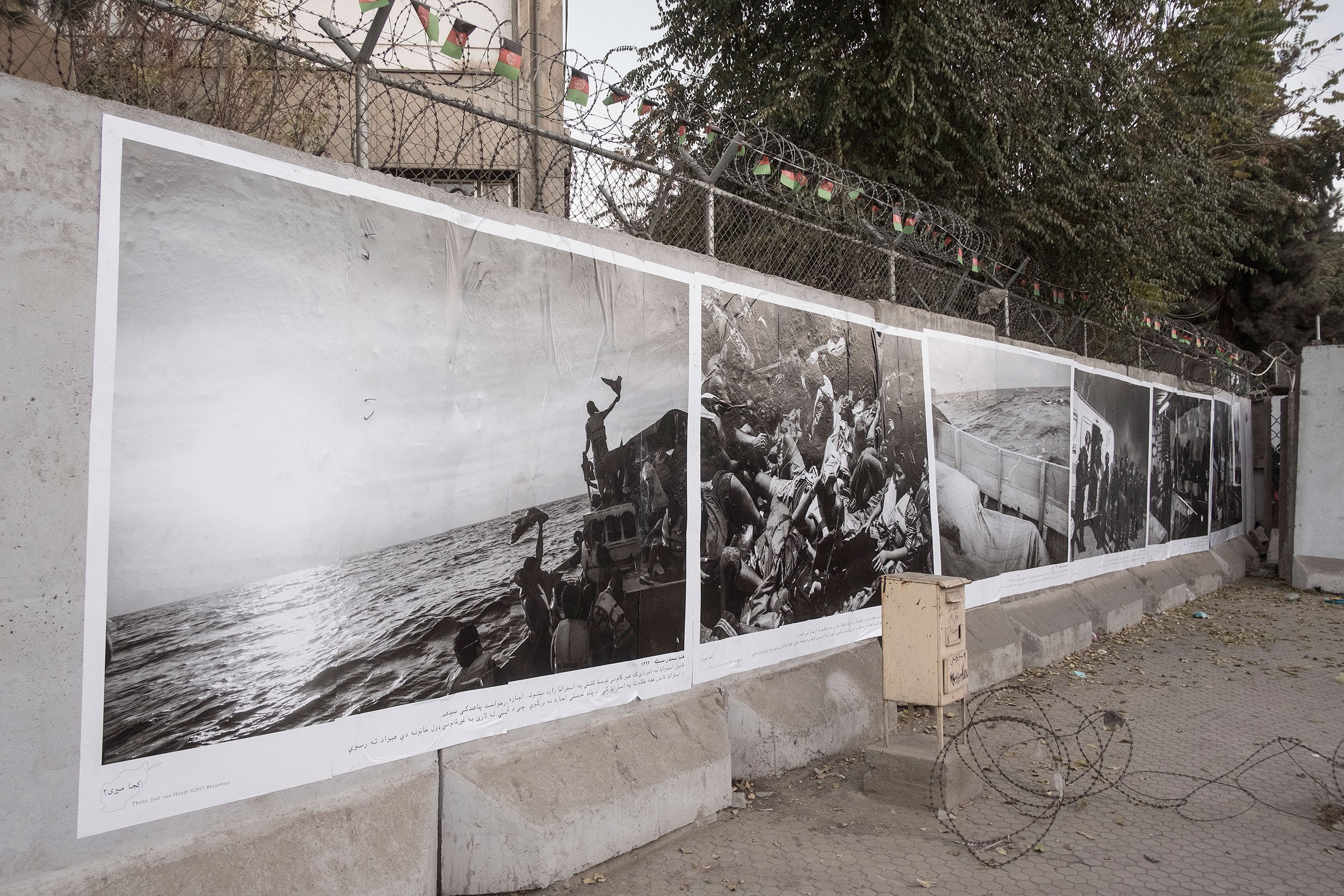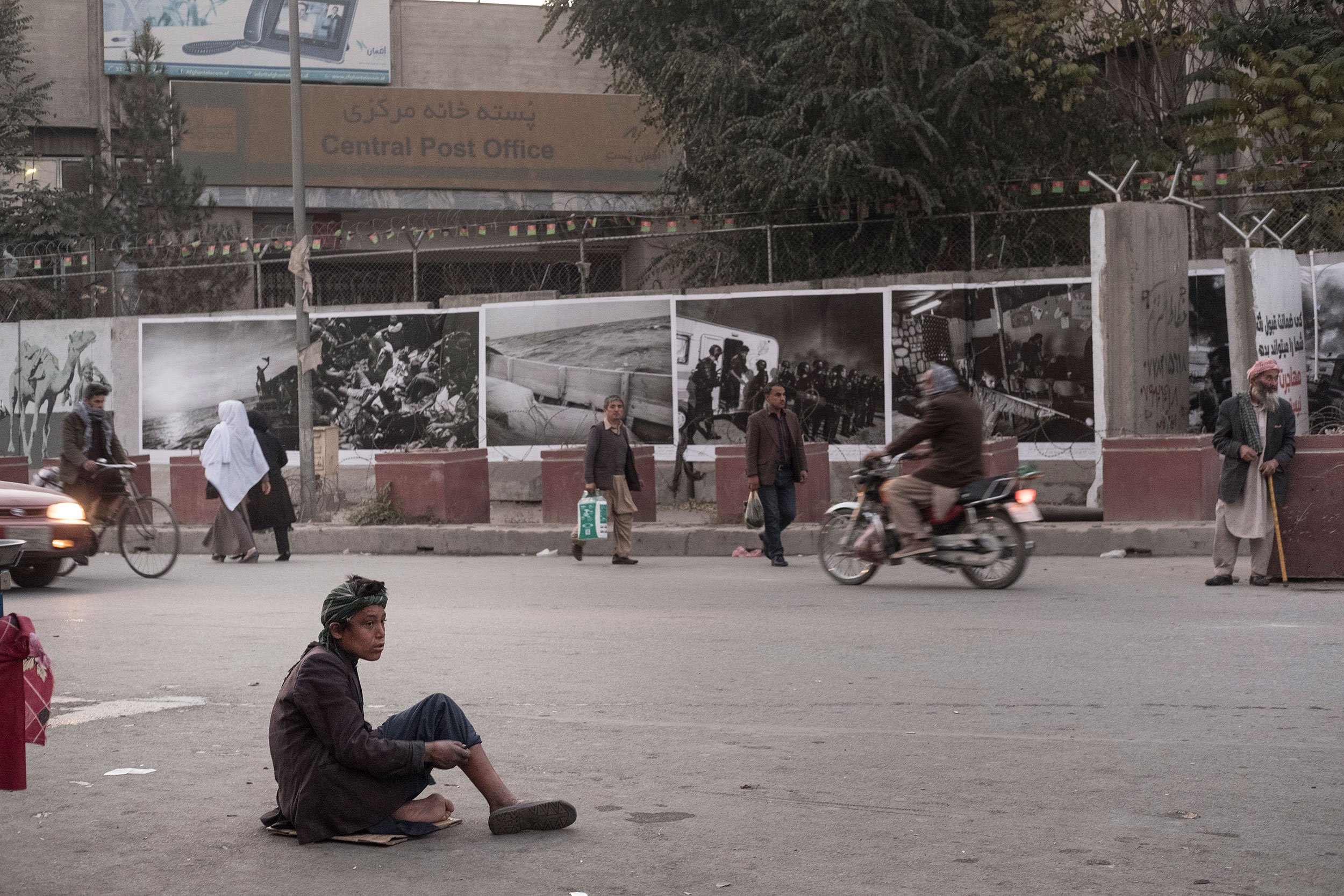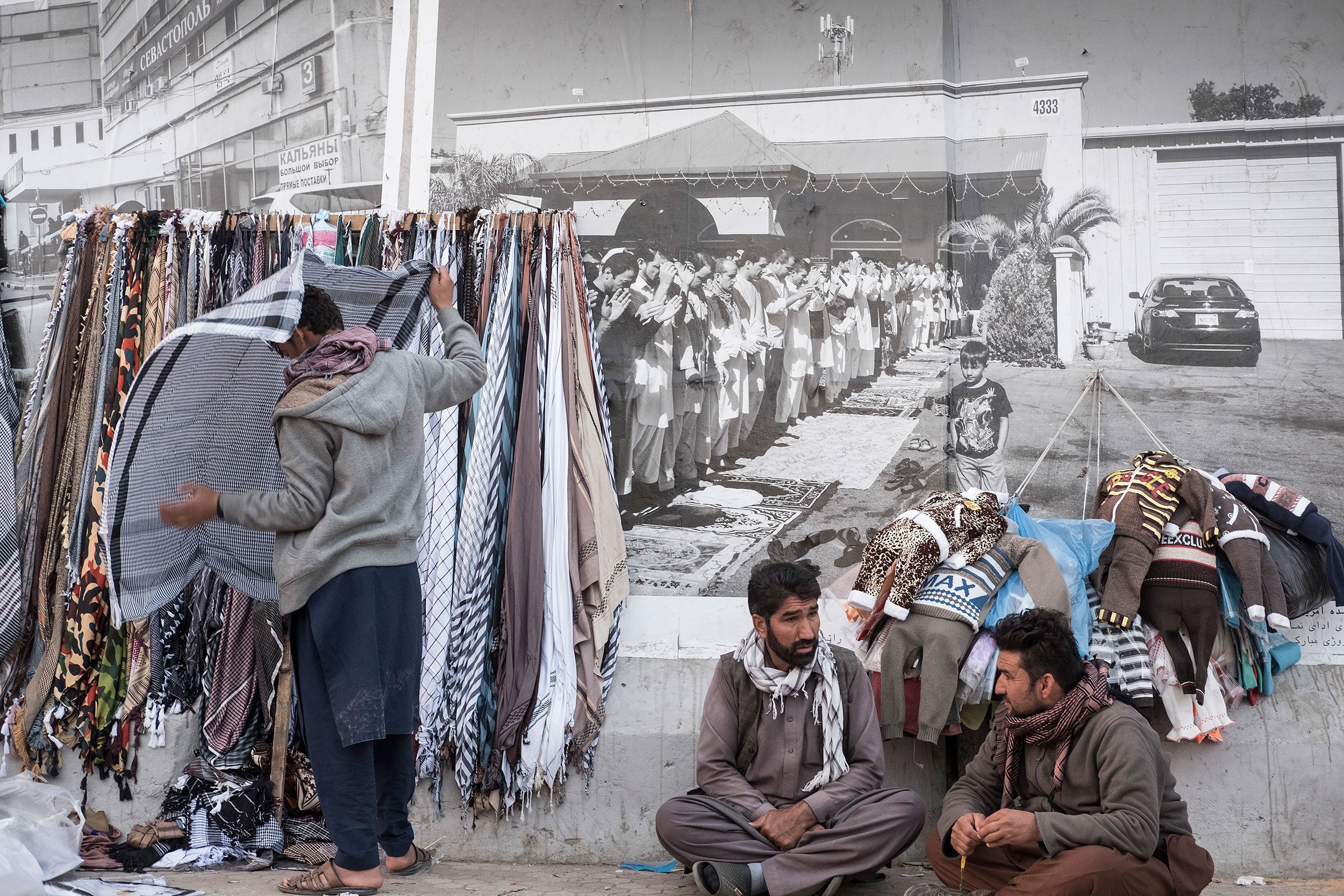
Afghanistan, Kabul
Mourners visit freshly-dug graves on the outskirts of Kabul after two explosions targeted a demonstration, killing at least 80 people.

Afghanistan, Kabul
A young girl sells fuel in Kabul. She became an IDP when she fled with her family to Kabul.

Afghanistan, Kabul
Early morning travelers wait for their bus to leave for Nimroz province to the border with Iran and Pakistan.
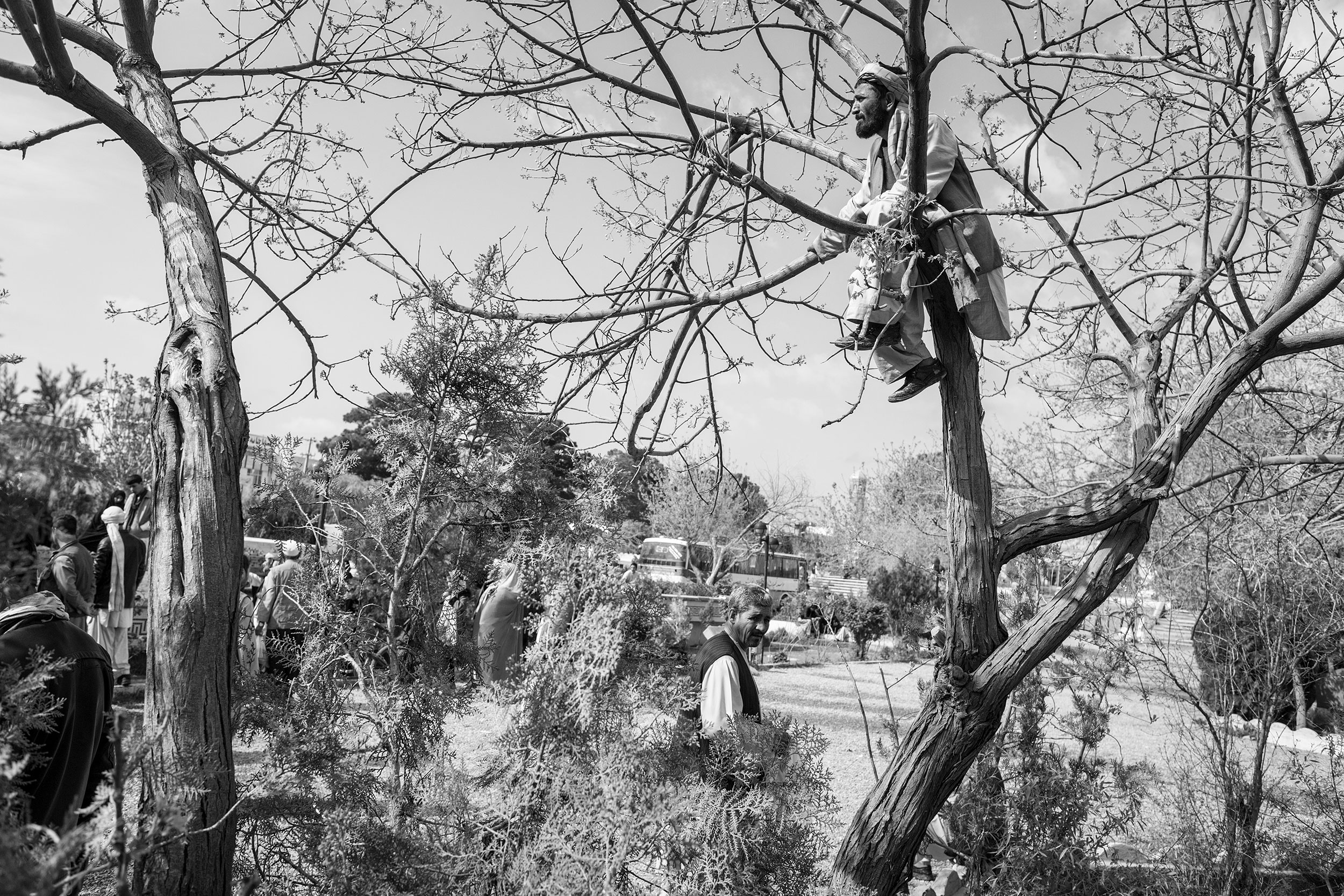
Afghanistan, Herat
Sharif Udin listens from a tree to a police commander calling out names of new passports. He hopes to travel to Iran.

Afghanistan, Nimruz
An Afghan man takes a bath in the Lashkari Canal while he’s waiting to be smuggled across the border with Iran, one mile away.
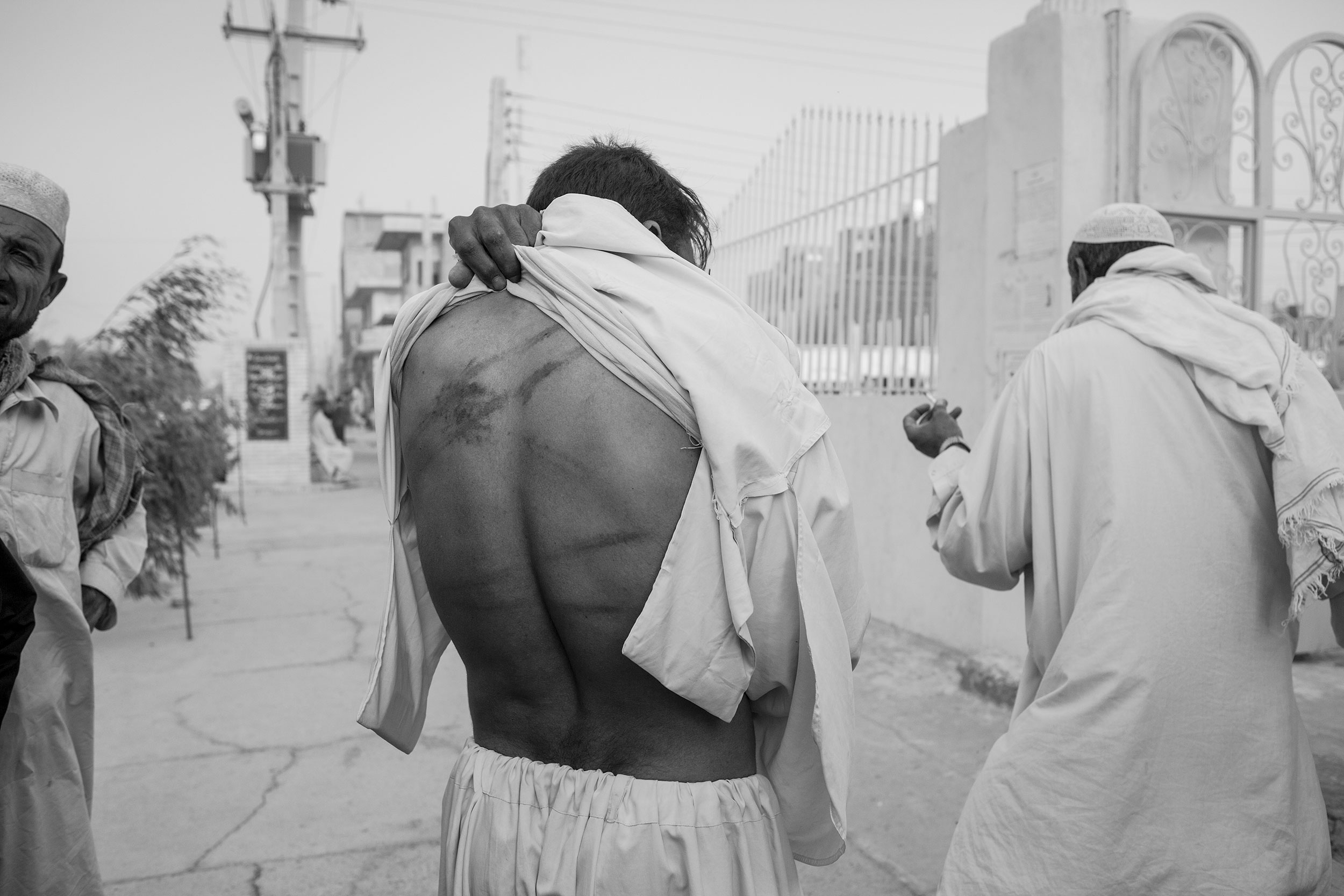
Afghanistan, Nimruz
A man recently deported from Iran displays marks he claims he received from being whipped by Iranian border guards

Afghanistan, Nimruz
Afghans try to cross into Pakistan’s Baluchistan before entering Iran.

Afghanistan, Nimruz
Gulbadeen was injured by a landmine when he was in a truck trying to cross the border to Pakistan.

Turkey, Istanbul
An audience of mostly Afghans watch a wrestling match in Istanbul. Many Afghan refugees and migrants live here, often waiting for a chance to travel further to the European Union.

Turkey, Istanbul
Sherzai gets a new haircut and shave. He's been here for one year and hopes to eventually make it to Germany or Canada.

Turkey, Istanbul
Safiullah from Kunduz prays while taking a break from working, laying grass on a new viaduct in Istanbul's Zeytinburnu district.
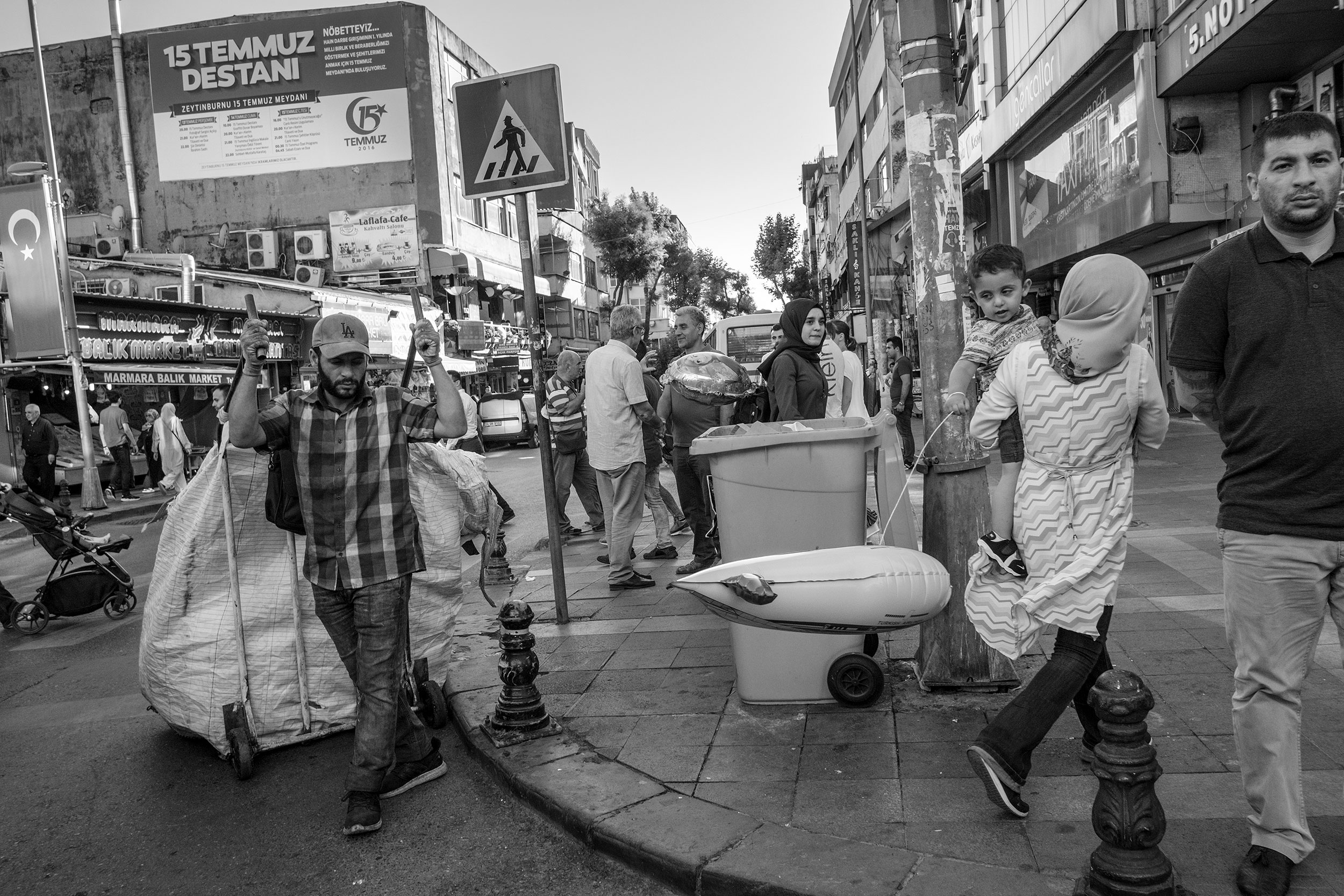
Turkey, Istanbul
A man collects recyclable garbage. This work is mostly done in this area by Afghans.

Greece, Lesbos
Mortaza swims in the Aegean Sea in the port of Mitilini. He is staying with other Afghan minors in a house in Mitilini waiting for the Greek government to decide on his asylum request.

Greece, Lesbos
Massoud from Kunduz (white T-shirt) eats his iftar ramadan meal with Pakistanis in a derelict building near Mitilini.

Greece, Chios
The grave of a young Afghan child lays on a hillside on the island of Chios, overlooking the Aegan sea and the Turkish coast from where he left with his family in February 2016

Greece, Lesbos
Zahir from Ghazni lifts weights in an abandoned meat truck where he lives with a friend.

Greece, Chios
Refugees from Syria and Iraq prepare their iftar meal in a camp on the island Chios.

Greece, Idomeni
A European volunteer tries to cheer up children at a makeshift refugee camp at a petrol station near the Macedonian border.
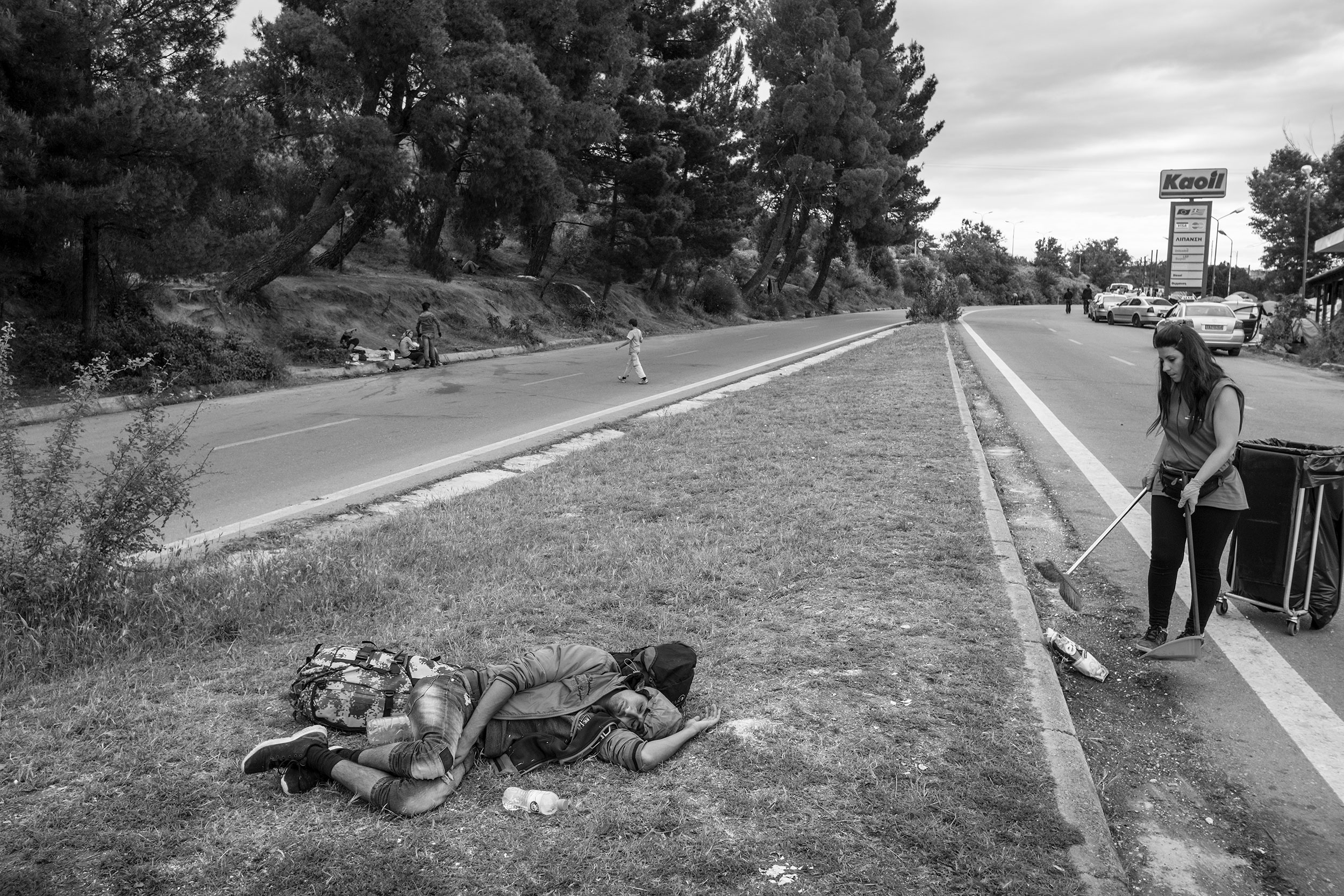
Greece, Idomeni
Afghan refugee Khalid sleeps on the bank of a road next to a petrol station and Hotel Hara, close to the Macedonian border.

Greece, Patras
Afghans sleep while a Pakistani man prays in a makeshift mosque in a derelict factory near the port of Patras.

Greece, Patras
An Afghan man climbs over the fence of the port in Patras, hoping to find a lorry to hide in and travel to Italy.

Serbia, Belgrade
Afghan and Pakistani men sit next to a wood fire in a derelict warehouse behind the central train station.

Serbia, Belgrade
Afghan men try with force to wash "Comando", from Afghanistan's Nangarhar province.

Serbia, Belgrade
An 8-Year old Afghan boy from Nangarhar eats a meal that volunteers hand out once a day.

Serbia, Belgrade
An Afghan man feeds pigeons while Afghans and Pakistanis line up for food handouts.
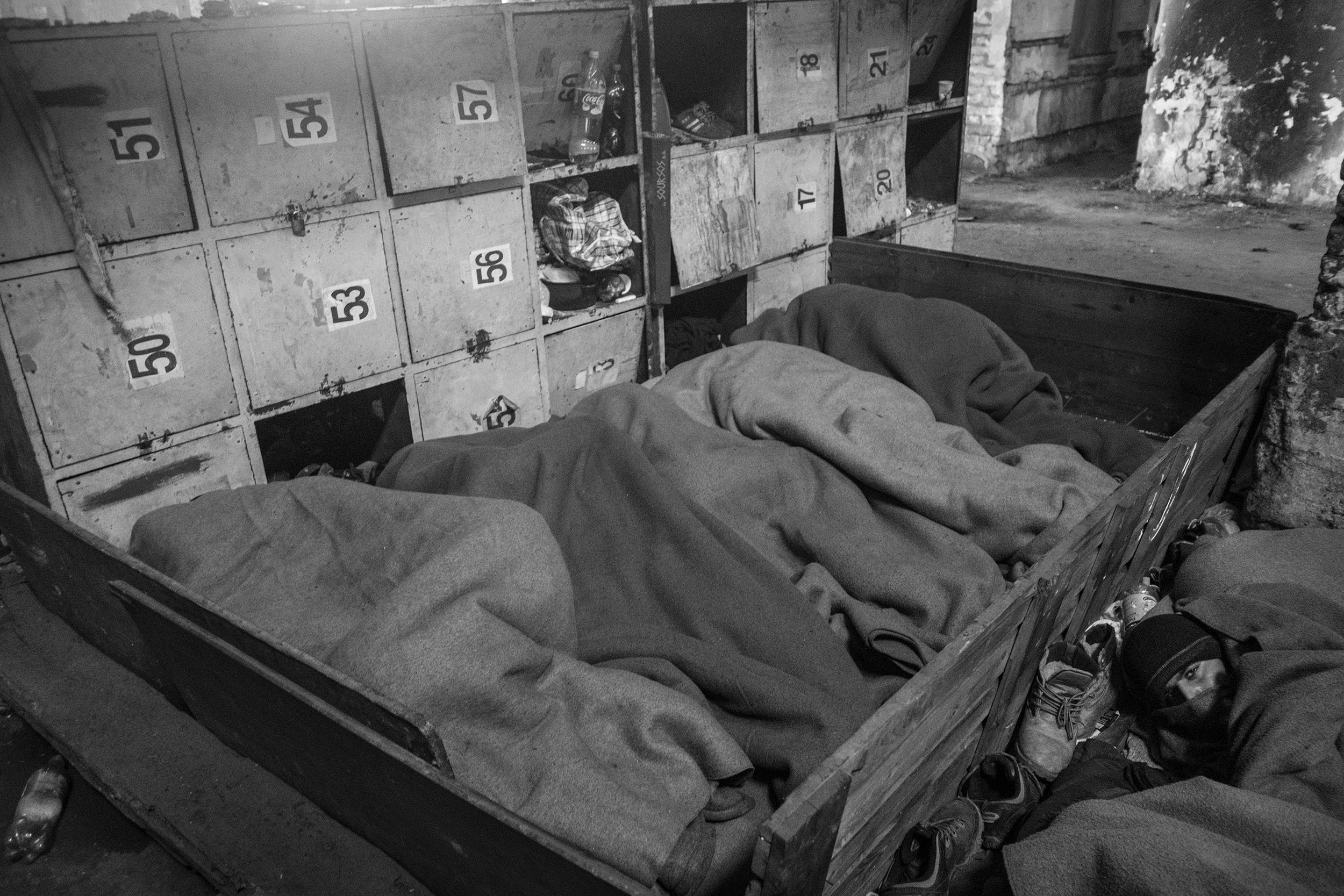
Serbia, Belgrade
Afghan men sleep in an unheated warehouse in sub-zero temperatures behind the central train station.
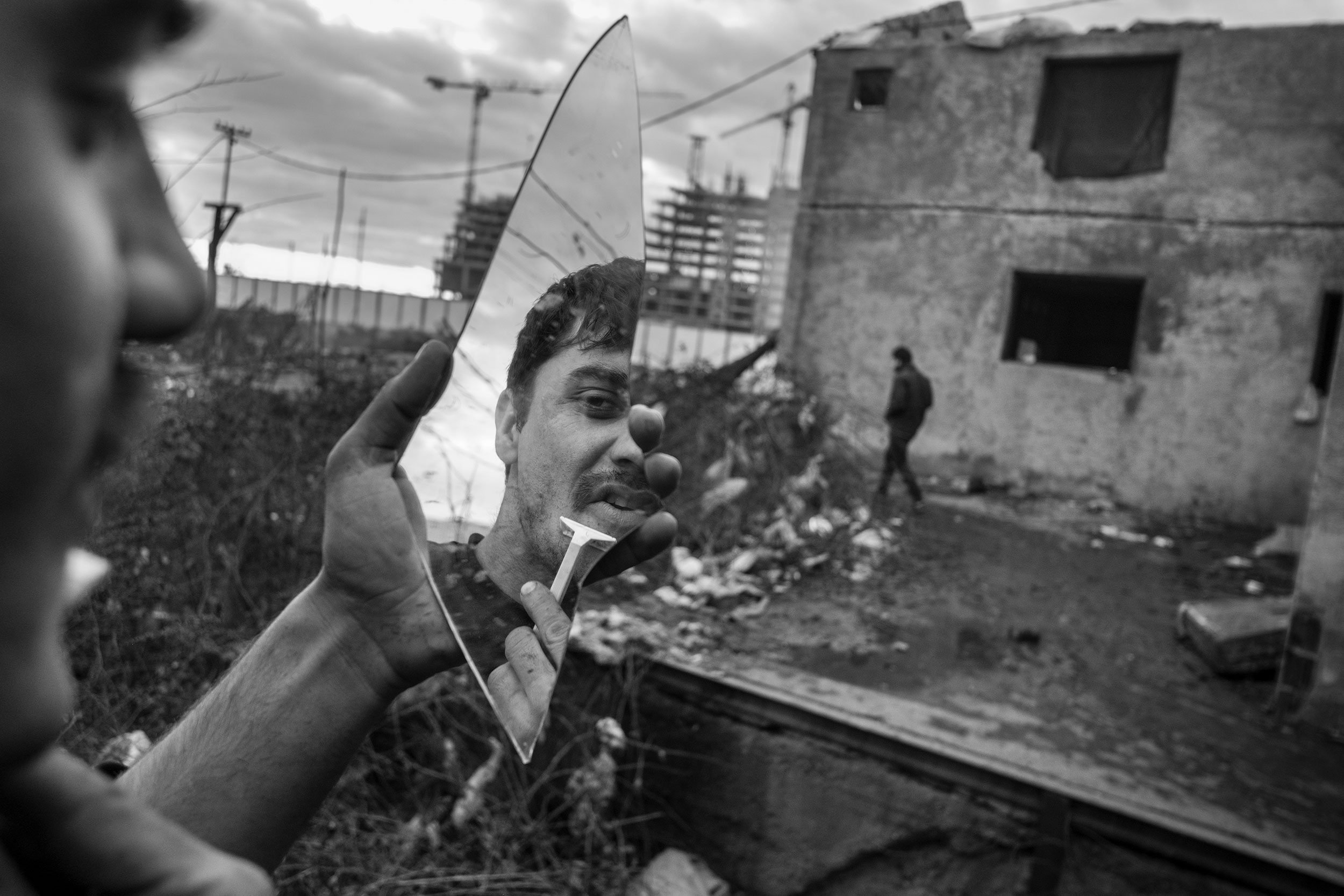
Serbia, Belgrade
Islam from Afghanistan shaves outside a derelict warehouse behind the station.

Serbia, Belgrade
Afghan and Pakistani men sit next to a wood fire in a derelict warehouse behind the central train station.
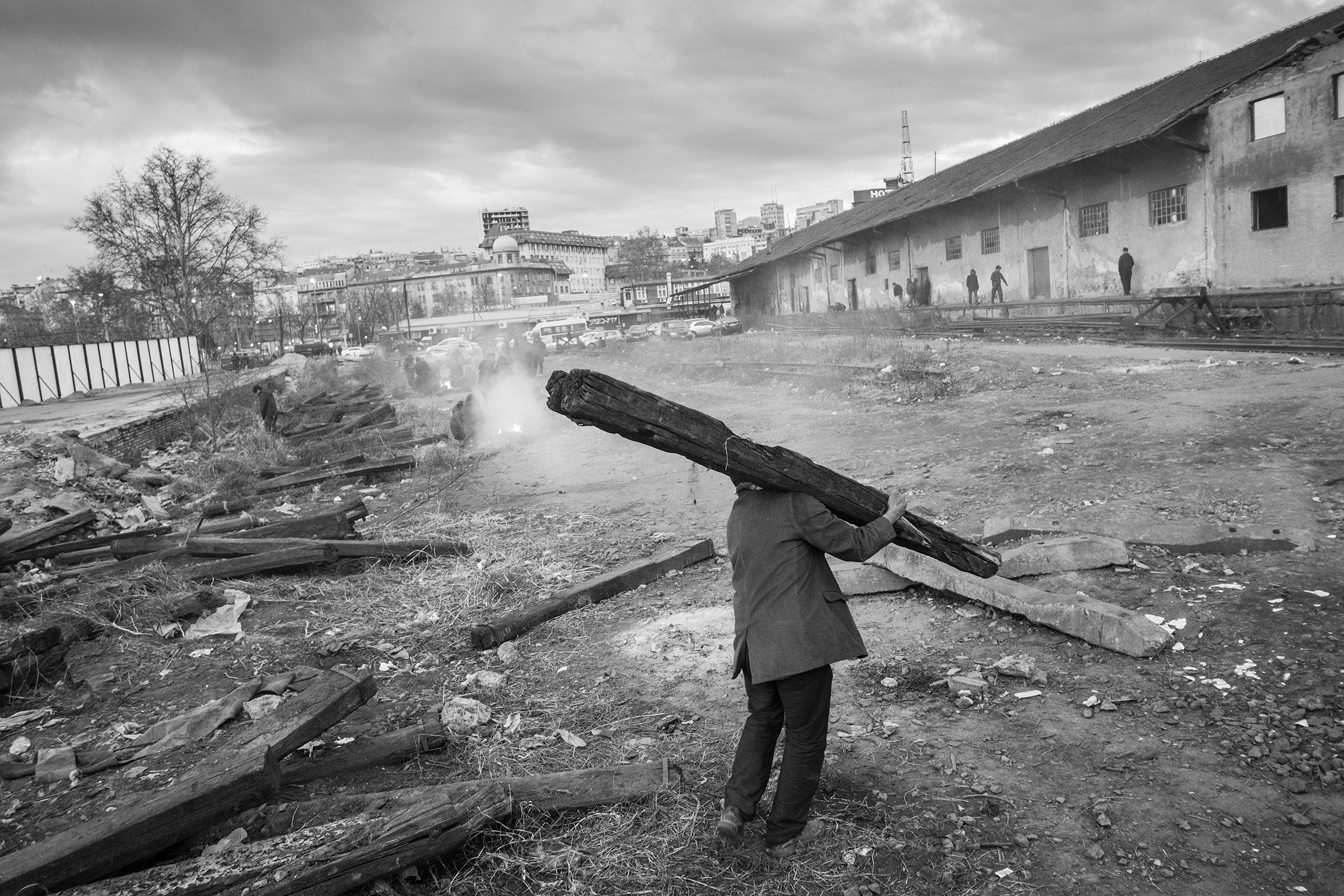
Serbia, Belgrade
An Afghan man carries an old railway sleeper to make a fire inside a derelict warehouse.

Serbia, Palic
A group of Afghan and Pakistani try to cross the border with the European Union at night.

UK, London
British tabloid newspapers

France, Calais
An Afghan rides a bicycle on the main road of the makeshift refugee camp know as "The Jungle".

France, Calais
Imran Khan, an 8-year-old refugee from Kunduz, Afghanistan plays pool in a makeshift leisure hall for refugees under 18.

France, Calais
A refugee from Logar makes bread in Calais, where an estimated 8000 refugees and migrants stay.

France, Calais
Refugees and migrants, including Afghans, call home using WiFi from a truck provided by an NGO in “The Jungle”.

France, Calais
Two Afghans have lunch in a makeshift Afghan restaurant on the main road of the camp.

France, Calais
An Afghan refugee walks to the container where he stays in the official part of the Calais refugee camp.

France, Calais
An Afghan refugee packs his belongings while a fire destroys his tent in "The Jungle".

France, Calais
Afghan refugees are escorted out of "The Jungle" by French police officers on the third and last day of their closing operation.

Afghanistan, Daykundi
A shepherd walks his flock home in Afghanistan's central Daykundi province, past a billboard by the Australian government trying to dissuade Afghans from traveling there.

Afghanistan, Kabul
Many brokers at Sarai Shahzada, a currency market in downtown Kabul, are part of a money-transfer system known as hawala, which is often used in the refugee-smuggling business.

Indonesia, Bogor
Asylum seekers from Afghanistan, Iran and Iraq are on a bus back to their safe houses in Jakarta after a failed attempt to leave for Australia by boat. The Indonesian police stopped their convoy.

Indian Ocean
Almost sixty Iranian asylum seekers and one Afghan man from Kunduz make the hard three-day journey from Indonesia to the Australian island of Christmas Island.

Indian Ocean
Morning, the second day of a three day boat journey from Indonesia to Australia. On the deck of a 30-foot long boat carrying asylum seekers.
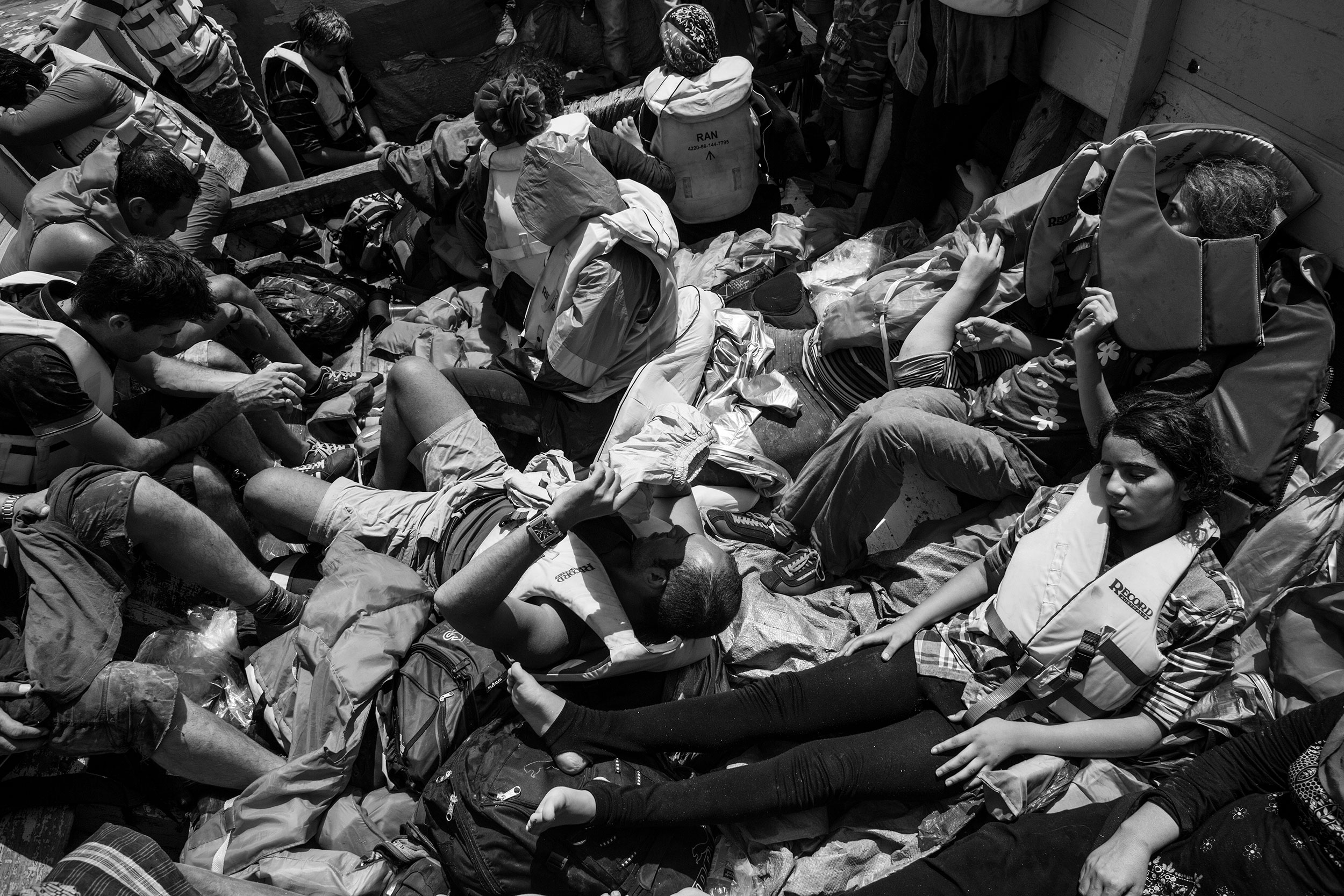
Indian Ocean
Asylum seekers en route to the Australian territory of Christmas Island.

Indian Ocean
Late afternoon on their third day at sea aboard a 30-foot vessel, asylum seekers signal for the second time today to the Australian Navy.

Germany, Frankfurt
Men celebrate the Afghan New Year by listening and dancing to a performance by Hamayoun Angar, an Afghan singer who came to Europe as a refugee a couple of years ago.
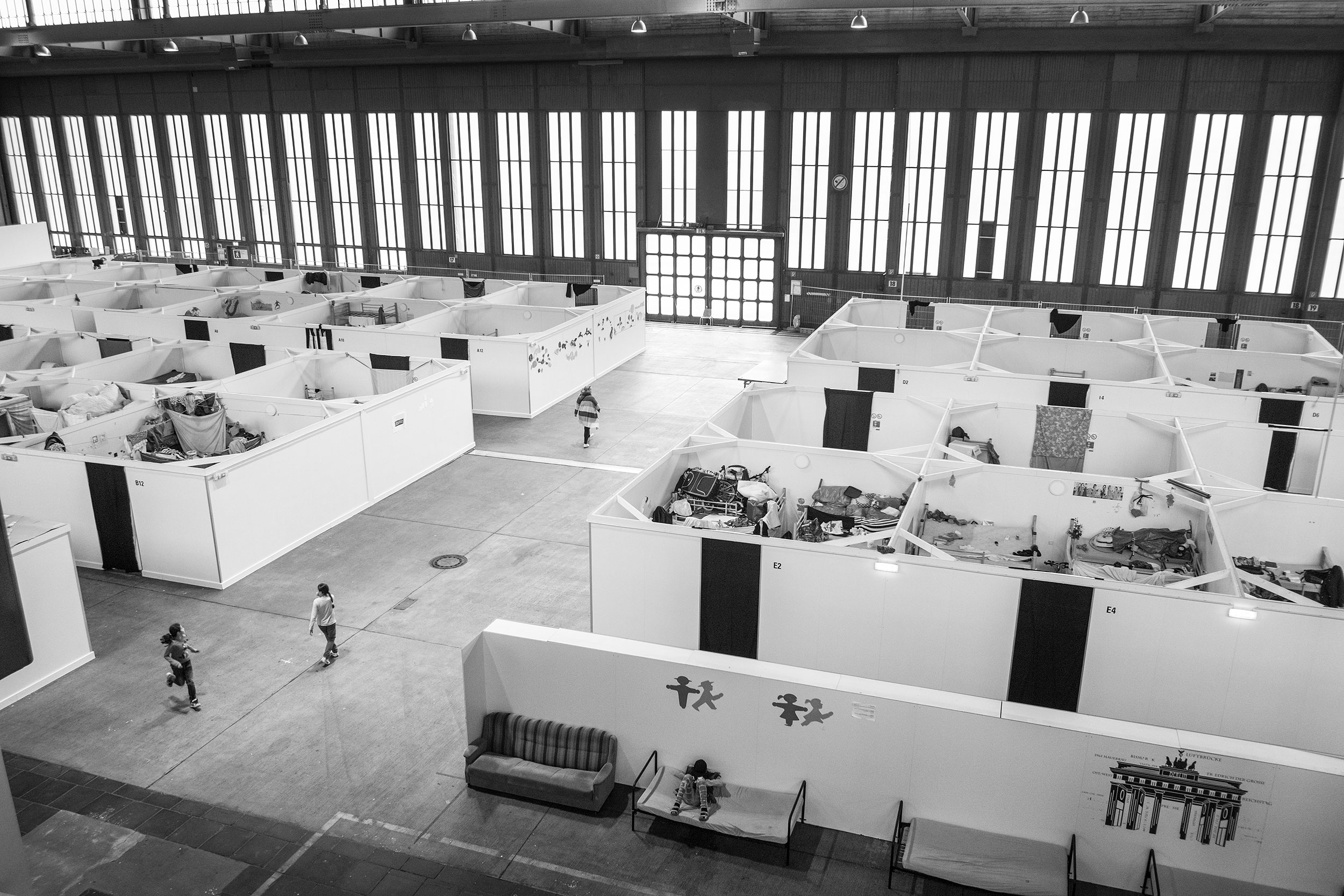
Germany, Berlin
Refugees staying in the Tempelhof refugee shelter, a former airport.

Germany, Berlin
Afghan refugee Mortaza stands on the back of a bicycle while a refugee from Badakhshan province rides it near the river Spree in Berlin. Both have been in Germany for over one year and applied for asylum.

Russia, Moscow
Masuma walks in Moscow's Gorky Park. After receiving threats for working with foreigners and the election commission in her hometown of Herat, she decided to leave Afghanistan. She's now an engineering PhD student in Moscow.

Russia, Moscow
An Afghan man carries goods from storage to shops in the Sevastopol shopping centre in Moscow. Many Afghans work here, and some recently arrived without proper documents.

Russia, Moscow
Afghan children receive Dari and Pashto lessons from an NGO in the Sevastopol shopping centre. Teacher Kadria has been in Moscow since 1993.

USA, Sacramento
Afghans gather to pray and celebrate Eid-al-Fitr, the end of Ramadan in a party centre.

USA, Sacramento
Naimatullah Sultani and two of his friends in his living room in Sacramento on Eid-al-Fitr, the end of Ramadan. He came to the US in November 2013.

UK, London
Nazir from Afghanistan's Baglan province works on a fruit and vegetable stand in northern London.

UK, London
Gurmeet Kaur and her husband Pritpal Singh with their 4-year-old daughter in their house in Southall. They both left their native Kabul during the civil war in the early 1990s.

Afghanistan, Torkham Gate
After living in Pakistan for 31 years, a family crosses the Torkham border into their native Afghanistan. Many Afghan refugees have been forced to return to their home country in recent years.

Afghanistan, Kabul
A baby lays in a temporary home on the outskirts of Kabul. The baby’s family fled the violence of Islamic State in Nangarhar province.

Afghanistan, Kabul
After two years Farshid is back in Afghanistan after his asylum claim in The Netherlands was rejected.
KUJA MERI? (2017)
Despite nearly forty years of war, two decade-long occupations by former Cold War superpowers and a security vacuum that could engulf the region, the world is turning a blind eye to the fate of Afghanistan’s people – especially its refugees.
A spiraling security situation, weak government and abysmal economic prospects mean Afghans are trying to leave in huge numbers. But unlike Syrians, Iraqis, or Eritreans, in 2016 Afghans were excluded from the EU-Turkey deal, which only considered asylum applications from people deemed to have a 75% or higher chance of making it. Germany is sending planeloads of Afghans home, the United Kingdom has also embarked on deportations, and Pakistan and Iran are sending home hundreds of thousands of Afghan refugees.
Their stories have taught me that there is a serious distortion between what migrants and refugees hope for in their new lives abroad, and the stark reality of what they find once they leave.
That is why I started this project. Called “Kuja Meri?” in Dari, meaning “Where are you going?”, it has been designed with an Afghan audience in mind. To reach this audience, the project was exhibited in the streets of Kabul. Starting October 27, 2017, around 50 billboard-sized photographs were pasted on the concrete blast walls surrounding the Ministry of Information in the centre of Kabul.
Why are Afghan refugees in particular so unwelcome? A major reason for their limited chances of asylum is rooted in the NATO-led war, which officially ended combat missions in 2014. The war is increasingly seen as a failure by Afghans: large swathes of the country are under Taliban control and Islamic State has made inroads. But for NATO countries, which at the peak of the surge in 2010-11 had 130,000 foreign troops in the country, the war was a political success, and cannot be seen as a failure.
